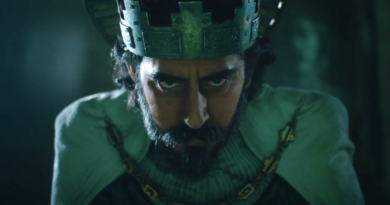“Andrei Rublev” Review
Few filmmakers in the history of cinema are as simultaneously influential and inaccessible as Andrei Tarkovsky. His small filmography of dreamlike epics is regarded as some of the finest art produced in the 20th Century, however his tendency towards glacial pacing and abstract compositions have caused much of his work to go unwatched by those who aren’t actively seeking it out. His second film, the 1966 biographical drama Andrei Rublev, is perhaps one of his most accessible, whose only major obstacle is being over three hours long. It’s also an amazing movie.
The movie tells a loosely adapted biography of real-life monk and acclaimed icon painter Andrei Rublev. It is broken up into eight chapters, each focusing on a major event in Andrei’s life or the world around him during the early 1400s. While a bit slow to start, the film picks up the pace around the end of Chapter 2 and accelerates from there, delivering a treasure trove of cinematic wonders from massive battles to quiet, poetic montages, and incredible feats of creativity and ingenuity. The final and longest chapter, which focuses on a teenage boy overseeing the casting of a church bell, is the highlight.
The story is less a literal recounting of events and more an extended metaphor and commentary on the life of an artist and how it is shaped by one’s time. Much is made of the brutality, chaos, and oppression of 1400s Russia and how these circumstances shaped Andrei Rublev’s life and creative output. Conversely, much is also made about the affect that Andrei and other artists have on the world around them, and how their work exerts an effect on people that is both subtle yet transformative. Much of the film’s themes relate directly to Tarkovsky’s own life as an artist and devout Christian, who experienced great hardship and great success in Soviet Russia. Much of Tarkovsky’s career was shaped by his constant fighting with the ruling Communist party, who objected to much of the content in his films and stifled his creativity while simultaneously attempting to capitalize on his fame and renown, both inside Russia and internationally.
The film’s style features many of Tarkovsky’s signature cinematic tools. The cinematography is gorgeous, featuring powerful images full of atmosphere, movement, light, and shadow. Through the editing, Tarkovsky explores his belief that cinema is about “sculpting in time” by both stretching and compressing the audience’s experience of time. Tarkovsky mixes his signature long takes, which stretch out an individual moment until it possesses an almost unbearable weight, with sudden cuts that cross large gulfs of time in an instant, giving the movie the quality of a dream.
There are a number of great performances as well, especially from Tarkovsky stand-by Anatoly Solonitsyn as the lead. The story is riveting, at least once it gets going, full of action, drama, meditation, horror, and uplift. Some may criticize Tarkovsky for being slow or boring, and I can see how one might say that of some of his other movies, but that criticism cannot be made of Andrei Rublev unless one has the attention span of a goldfish.
The main annoyance I had when watching is something unique to non-Russian speakers. The film has moments where it can be incredibly verbose, and often mixes dramatic monologues and dialogues with montages that tell a parallel story. It can be occasionally frustrating trying to read subtitles and take in complex visual information at the same time.
All this is to say that Andrei Rublev is a great movie and a landmark in cinematic history, as many of Tarkovsky’s films are. However unlike the much slower Stalker or the more abstract Solaris, Andrei Rublev’s more conventional aspects give it broader appeal as well as more visceral sense of excitement and wonder, and it’s well worth your time.




